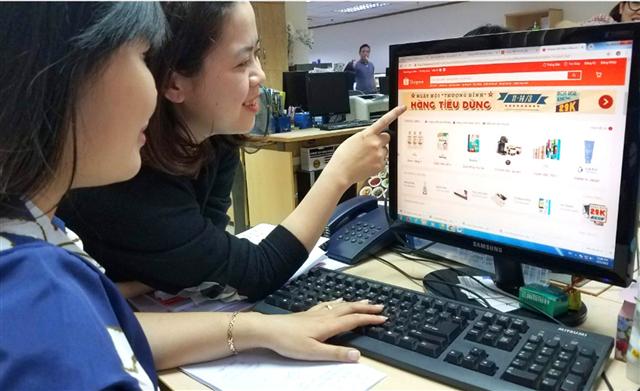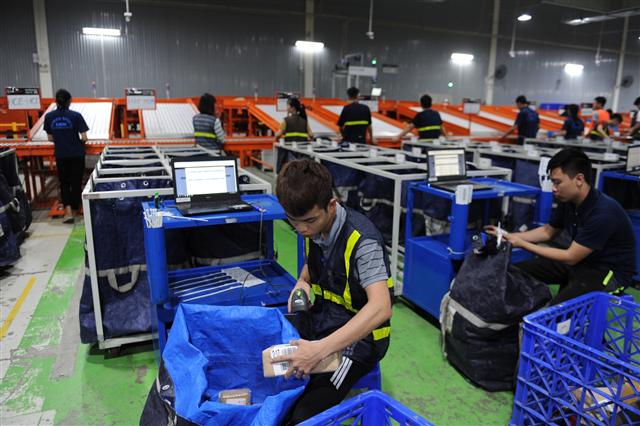Young consumers drive Vietnam’s accelerated e-commerce growth
Young consumers drive Vietnam’s accelerated e-commerce growth
The Covid-19 pandemic has accelerated the shift to online shopping and trade, with Vietnam topping the list of Southeast Asian countries in terms of e-commerce growth. Further growth is forecast in this field.
Growing global e-commerce
|
“Even in times of worldwide shutdowns, globalization has shown its resilience, fueled by digitalization and the power of global trade,” says John Pearson, CEO of DHL Express. “These trends have led an ever-growing number of consumers to shift their shopping activities online. The pandemic has accelerated this development like never before, with a sharp rise in businesses selling their goods in the global marketplace. E-commerce and global logistics thus provided the key to unlock local shutdowns, keep economies running and mitigate the impact of Covid-19 for many of our customers.”
In 2020, e-commerce revenue accounted for approximately 5.5 percent of the total retail sales of goods and services in Vietnam that year, according to the Statista market and consumer data company.
Recently issued results of a Vietnam e-Commerce Association’s (VECOM) survey of more than 5,000 enterprises reflects this shift, showing the country’s e-commerce value increased by about 15 percent in 2020, reaching a turnover of about US$13.2 billion.
Ho Chi Minh City leads the e-commerce index with a total score of 67.6 points, followed by Hanoi with a total score of 55.7 points, the central city of Da Nang with 19.04 points, the southern province of Binh Duong with 14.76 points, and the southern province of Dong Nai with 11.14 points.
The e-commerce gap between the two biggest cities (Hanoi and Ho Chi Minh City) and other provinces remained unchanged. The northern port city of Hai Phong was relegated from the third position to the sixth in the e-commerce index.
The Vietnam E-business Index (EBI) was based on three key criteria: human resources and infrastructure in information technology (IT), e-commerce transactions between enterprises and consumers, and transactions among businesses.
The report also indicated that the pandemic has made enterprises more dynamic in applying IT and improving organizational structures and business operations. Many businesses have been strengthening digitalization and human resources training, and are exploiting online platforms in internal administration and connection with customers.
According to Nguyen Binh Minh, Member of VECOM Executive Committee, Vietnam needs to further improve its e-commerce laws and regulations to overcome digitalization challenges and develop e-commerce. Vietnam’s digital economy was expected to reach US$52 billion by 2025, re-accelerating to nearly 29 percent in compound annual growth rate, according to a November 2020 report by Google, Temasek and Bain & Company. Online retail sales are expected to increase 46 percent, ride-hailing and food delivery services 34 percent, and marketing, entertainment and online games 18 percent.
Shopping behavior of young consumers

Looking at 2025, Vietnam’s digital economy will likely reach US$52 billion in value
|
On March 31, DHL Express, the world’s leading international express service provider, released a new Whitepaper “The Ultimate B2B e-commerce Guide: Tradition is out. Digital is in”. The study predicts strong growth for the B2B e-commerce market in the coming years.
According to the study, in 2019, before the pandemic, global sales on B2B e-commerce sites and marketplaces had already increased 18.2 percent to reach US$12.2 trillion, outpacing the market size of the B2C sector. Through Covid-19 and the resulting acceleration of digitalization, this global B2B e commerce volume is estimated to reach US$20.9 trillion by 2027.
By 2025, 80 percent of all B2B sales interactions between suppliers and professional buyers will take place on digital channels. The impact of the Covid-19 pandemic on the pace of digitalization and the purchasing behavior of technology-savvy millennials, who are now of an age to be the professional B2B decision-makers, are the main drivers of this global e-commerce growth, the Whitepaper says.
Already, millennials account for 73 percent of all professional B2B purchasing decisions. As digital “natives”, their experiences in the B2C-sector translate into high expectations when making B2B transactions, pushing companies to invest in digital solutions, such as selling platforms, while offering great growth potential, according to the study.






















